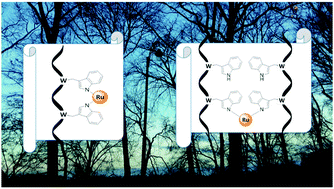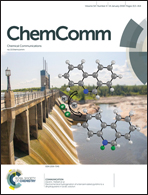Perspectives of ruthenium(ii) polyazaaromatic photo-oxidizing complexes photoreactive towards tryptophan-containing peptides and derivatives
Abstract
RuII polyazaaromatic complexes have been studied with the aim of developing molecular tools for DNA and oligonucleotides. In this context, RuII–TAP (TAP = 1,4,5,8-tetraazaphenanthrene) complexes have been developed as specific photoreagents targeting the genetic material. The advantage of such compounds is due to the formation of photo-addition products between the Ru–TAP complex and the biomolecule, originating from a photo-induced electron transfer process that takes place between the excited Ru–TAP complex and guanine (G) bases of DNA. This photo-addition has been more recently extended to amino acids in view of applications involving peptides, such as inhibition or photocontrol of proteins. More particularly, tryptophan (Trp) and Trp-containing peptides are also able to be photo-oxidized by RuII–TAP complexes, leading to the formation of photo-addition products. This mini review focuses on recent advances in the search for RuII polyazaaromatic photo-oxidizing complexes of interest as molecular tools and photoreagents for Trp-containing peptides and proteins. Different possible future directions in this field are also discussed.



 Please wait while we load your content...
Please wait while we load your content...